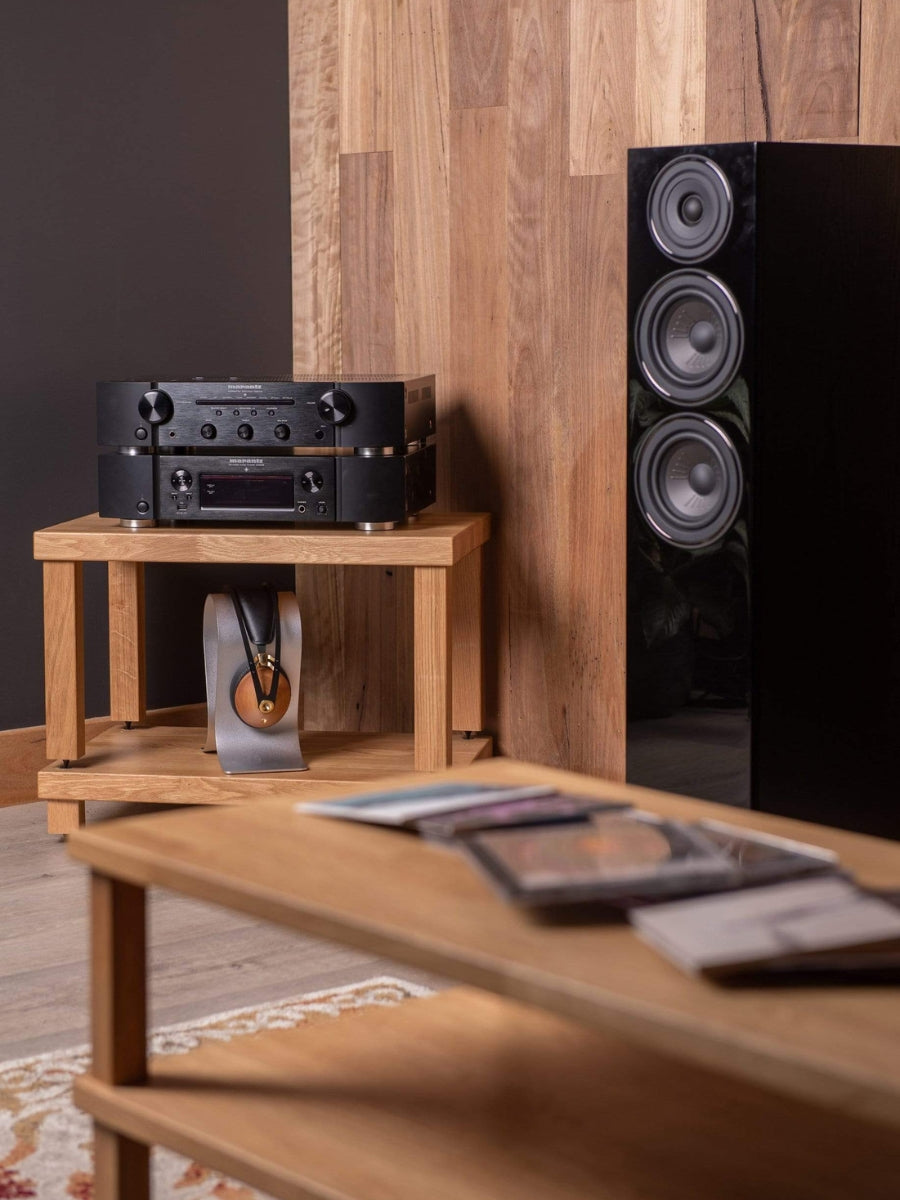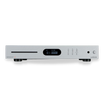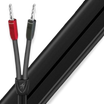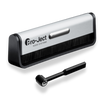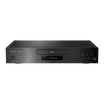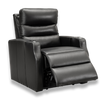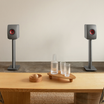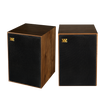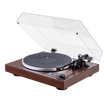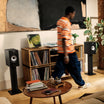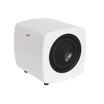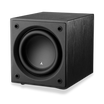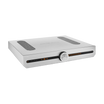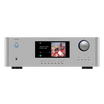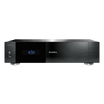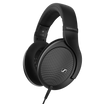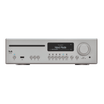

4K Media Players
Filters
5 products
TELL ME MORE ABOUT
4K Media Players
Media players have revolutionized the way we access and enjoy content, offering a seamless bridge between the vast world of online media and... Read More
Media players have revolutionized the way we access and enjoy content, offering a seamless bridge between the vast world of online media and our personal entertainment systems. Whether you’re streaming the latest 4K movies, binge-watching a series, or enjoying high-fidelity audio, a good media player can transform your experience.
What Is A Media Player?
A media player is a device designed to play digital media content from various sources on your TV, home theatre system, or even a mobile device. It serves as a bridge between the internet or your personal media library and your entertainment setup, allowing you to stream or play audio and video content. Modern media players can handle a wide range of file formats and resolutions, including high-definition and 4K video, and are often equipped with smart capabilities to access online streaming services like Netflix, Hulu, or Spotify.
These devices come in various forms, from compact streaming sticks and set-top boxes to more advanced units with larger storage capacities and enhanced audio-visual features. Some media players are focused on streaming content from the internet, while others are designed to store and play large libraries of digital media. They typically connect to your TV or home theatre system via HDMI and may offer additional connectivity options like Wi-Fi, Bluetooth, and USB ports. Media players offer a convenient and user-friendly way to access a vast array of content, making them a central component of modern home entertainment systems.
Key Features to Look for in Media Players
When selecting a media player, several key features stand out as essential for a superior entertainment experience. Understanding these features will help you choose a device that meets your needs:
-
Resolution Support: Look for a media player that supports high-resolution playback. Most modern players offer 1080p, with many supporting 4K Ultra HD, which is crucial for enjoying high-definition content on compatible TVs.
-
Streaming Service Compatibility: Ensure the media player supports your preferred streaming services, such as Netflix, Amazon Prime Video, Hulu, or Spotify. Some players may offer a wider range of apps and services than others.
-
Connectivity Options: Consider the types of connections the media player offers. HDMI is standard, but additional options like Wi-Fi, Ethernet, USB, and Bluetooth add versatility, allowing for wireless streaming and direct playback from external devices.
-
Audio Format Support: For audiophiles, support for high-quality audio formats like Dolby Atmos, DTS:X, or FLAC can be a deciding factor. These formats enhance the audio experience significantly, especially in a home theatre setup.
-
User Interface and Ease of Use: A user-friendly interface is crucial. Look for a media player with an intuitive interface, easy navigation, and responsive controls.
-
Remote Control Features: A good remote control can enhance the user experience. Some media players come with advanced remotes featuring voice control, touchpads, or motion sensors.
-
Storage Capacity: If you plan to download and store content, consider a media player with ample built-in storage or the ability to connect to external storage solutions.
-
Smart Home Integration: For those invested in smart home ecosystems, choosing a media player that integrates seamlessly with your existing setup (like Google Home or Amazon Alexa) can be beneficial.
-
Regular Updates and Support: Finally, consider the manufacturer's track record for providing firmware updates and customer support, which can be crucial for the longevity and security of your device.
How To Choose The Right Media Player For Your Needs?
Choosing the right media player for your needs involves considering several factors to ensure it aligns with your entertainment preferences and setup. Here’s a guide to help you make an informed decision:
-
Content Preferences: Determine what type of content you primarily consume. If you’re into streaming movies and TV shows, look for a player with strong support for popular streaming services. For music enthusiasts, prioritize players with high-quality audio output and support for various music streaming platforms.
-
Resolution and Quality: Consider the resolution of your TV or projector. If you have a 4K UHD TV, choose a media player that supports 4K content to take full advantage of your TV’s capabilities. Similarly, if your setup includes a sound system capable of Dolby Atmos or DTS:X, ensure the player supports these formats.
-
Connectivity: Evaluate the connectivity options you need. If your home network is robust, a Wi-Fi-enabled player might suffice. However, for more stable streaming, especially for high-definition content, an Ethernet port might be necessary. Also, consider the number and type of ports needed to connect to your other devices.
-
User Interface and Ease of Use: A user-friendly interface is crucial for a seamless experience. Consider players with intuitive navigation and responsive controls. If you’re into voice-controlled gadgets, look for players compatible with voice assistants like Amazon Alexa or Google Assistant.
-
Storage Needs: If you plan to download and store a lot of content, consider a player with ample internal storage or one that allows external storage connectivity.
-
Budget: Media players come in a wide price range. Set a budget that reflects your usage patterns and desired features. While premium players offer more features, many affordable options provide a satisfactory viewing experience.
-
Brand and Support: Finally, consider the brand’s reputation for reliability and customer support. A well-supported device with regular firmware updates can offer a better long-term experience.
Final Thoughts
Selecting the right media player is a crucial decision that can significantly enhance your digital entertainment experience. By carefully considering your content preferences, resolution requirements, connectivity needs, and budget, you can find a device that perfectly matches your lifestyle and entertainment setup.
Whether you're a movie buff, a music lover, or someone who enjoys a mix of streaming services, there's a media player out there to meet your specific needs. Remember, the ideal media player should not only provide access to your favourite content but also offer a seamless, intuitive, and enjoyable user experience.
Some Quick FAQ:
How does a media player differ from a streaming device?
A media player is a device primarily designed for playing local media files from a connected storage device, while a streaming device is focused on accessing content from online streaming services.
What are the benefits of using a TV 4K media player?
A TV 4K media player allows you to enjoy high-resolution content on your 4K TV, access a wide range of streaming apps, and often provides additional features such as voice control and advanced audio support.
Can a 4K media player improve the audio quality of my TV?
Yes, a 4K media player with advanced audio processing capabilities can enhance the audio quality of your TV by supporting formats like Dolby Atmos and offering better sound output options.
How can I enhance the storage capacity of my media player?
You can expand the storage capacity of your media player by using external hard drives, USB flash drives, or network-attached storage (NAS) devices to store and access additional media content.
Can a media player with Wi-Fi capability replace the need for Ethernet connectivity?
While a media player with Wi-Fi can provide convenient wireless connectivity, Ethernet connection is typically more stable and offers higher bandwidth, making it preferable for high-quality 4K video streaming and large file transfers.
NEED MORE GUIDANCE?
We are here to help
Check out some of our most commonly asked questions.
What do I need to play records?
Getting into vinyl? That’s awesome! We have some curated turntable Hi-Fi packs, with everything you'll need to get spinning right away. But if you want to build your own, read on for all the details.
First off, you'll need a turntable. It's the star of the show, so make sure it’s in good nick, with a decent cartridge and stylus (needle).
Next, there’s the phono preamp. Some turntables or amplifiers come with one built-in, but if yours doesn’t, you’ll need one as a bridge between your turntable and amplifier or powered speakers.
For the sound output, you’ve got two options. You can go with a traditional setup involving an integrated amplifier to take the signal from your phono preamp and power your passive speakers. Alternatively, you can opt for powered speakers, which have the amplifier built in – a handy all-in-one solution.
Speaking of speakers, good ones are a must for that rich, warm vinyl sound we all love. Whether you go for bookshelf or floorstanding speakers (or powered ones) depends on your space and budget.
And there you go! With these essentials, you’ll be ready to dive into your vinyl collection and enjoy that classic sound.
What can a wireless speaker do?
Wireless speakers are a game-changer for how you enjoy music and audio around the house. First off, they let you stream music wirelessly from your phone, tablet, or computer, so no more messing about with cables. You can easily play tunes from Spotify, Apple Music, Tidal or whatever streaming service you fancy.
If you’re into having music everywhere, many wireless speakers offer multi-room audio. You can sync them up to play the same music in every room or control what plays in each room individually, perfect for parties or just keeping the vibes consistent throughout your home.
Voice control is another brilliant feature. Many come with built-in assistants like Alexa, Google Assistant, or Siri. You can control your music with just your voice, ask for the weather, set reminders, or even control other smart home devices.
Sound quality? These little gadgets often pack a punch, delivering high-quality audio that can rival traditional wired setups. Some even offer 360-degree sound, filling the room with music from every angle.
In a nutshell, wireless speakers bring flexibility, convenience, and top-notch sound to your audio experience, making them a fantastic addition to any home. Whether you’re hosting a party, working from home, or just chilling out, they make listening to music a breeze.
How do you choose the right speaker & amplifier combination?
Deciding on a good speaker and amplifier combination is like putting together a perfect wine and cheese pairing—it’s all about balance and harmony. Here’s a conversational guide to help you through it:
First, consider your speakers. These are your main players, so you want to choose ones that fit your space and listening preferences. If you love deep bass and have a bit of room, floorstanding speakers might be your go-to. For smaller spaces or a more subtle look, bookshelf speakers are fantastic.
Now, onto the amplifier. This is where things get interesting. Your amp needs to match your speakers in terms of power and impedance. Check the wattage ratings on your speakers—your amplifier should provide enough power to drive them properly. Too little power and you’ll be missing out on sound quality; too much, and you risk damaging your speakers.
Next, think about the impedance (measured in ohms). Your amp and speakers should be compatible here too. Most speakers are rated at 8 ohms, but some can be 4 or 6. Make sure your amplifier can handle the impedance of your speakers to avoid any performance issues.
Another important factor is the type of sound you’re after. Some amps are known for their warm, rich tones, while others might be more neutral or even slightly bright. It’s a bit like choosing between a vinyl record and a digital stream or CD —each has its own charm. If possible, listen to different amp and speaker combinations to see what sounds best to your ears.
If purchasing online, note that at LE, we have made recommendations on speaker & amplifier combinations that we think sound wonderful together within each product listing.
Don’t forget about connectivity and features. Modern amplifiers often come with a host of options like Bluetooth, Wi-Fi streaming, and various inputs for all your devices. Make sure your amp has the inputs you need for your turntable, CD player, or streaming device.
Finally, consider your budget. Great sound doesn’t always mean breaking the bank, but be prepared to invest to get a quality setup that will last.
In the end, trust your ears. Listen to a few combinations if you can, and go with what makes your music sound the best to you.
Why do I need a headphone amplifier?
If you’re diving into the world of high-quality audio, a headphone amplifier can be a real game-changer. Think of it like this: most standard devices, like your smartphone or laptop, just don’t have the oomph needed to drive headphones properly. They might get the job done, but they won’t do your music justice. A headphone amp gives your headphones the power they need, ensuring you get the volume and clarity that really makes your music shine.
It’s not just about making things louder, either. A good headphone amp can significantly improve sound quality. You’ll get clearer highs, richer mids, and tighter bass, making your favourite tracks sound even better. You might notice details you’ve never heard before, especially if you’re listening to high-resolution audio files.
Premium headphones often have higher impedance, meaning they require more power than your typical audio source can provide. A headphone amp can handle this with ease, making sure your headphones perform at their absolute best. Plus, many amps come with extra features like bass boost, equalisation, and gain control, giving you more ways to tweak the sound to your liking.
In short, if you’re passionate about your music and want to hear it in the best possible way, a headphone amplifier is definitely worth considering. It’s all about unlocking the full potential of your gear and really getting the most out of your listening experience.
Where should I start when designing a home cinema?
Designing your own home cinema? That's awesome! We are here to help walk you through the process, but as a starting point, here’s what we would recommend and where to kick things off:
First up, pick your spot. For most people this is your existing lounge room, but if you have an underused garage, or spare bedroom, then you have an opportunity to create your very own true Home Cinema experience. Find a room that’s just right—not too cramped and ideally away from noisy areas. This sets the stage for that immersive movie experience.
Next, think about how you’ll set things up. Plan where your seats will go and where to place your projector screen for the best view from every angle. It’s all about creating that comfy, cinematic vibe.
Sound matters, too. Consider if you want a wireless system for simplicity or a full surround sound speaker system with AV receiver for that surround-sound thrill. Think about soundproofing or adding acoustic panels or thick carpets to really amp up the audio quality of the room.
Now, onto the screen. Decide between a crisp TV or a projector setup, depending on your room size and personal style. Maybe even throw in some dimmable lights or smart lighting to set the mood just right.
And hey, don’t forget comfort. Invest in plush cinema seating and think about the décor—whether it’s movie posters, blackout curtains, or popcorn machine & bar area, whatever gives you that true cinema feel.
Lastly, tech it up! Make sure everything—from your Blu-Ray player & Apple TV to your gaming consoles—is set to sync perfectly with your new setup.
With these steps, you’re on your way to creating a home cinema that’s not just a space, but an experience. Enjoy movie nights like never before!


